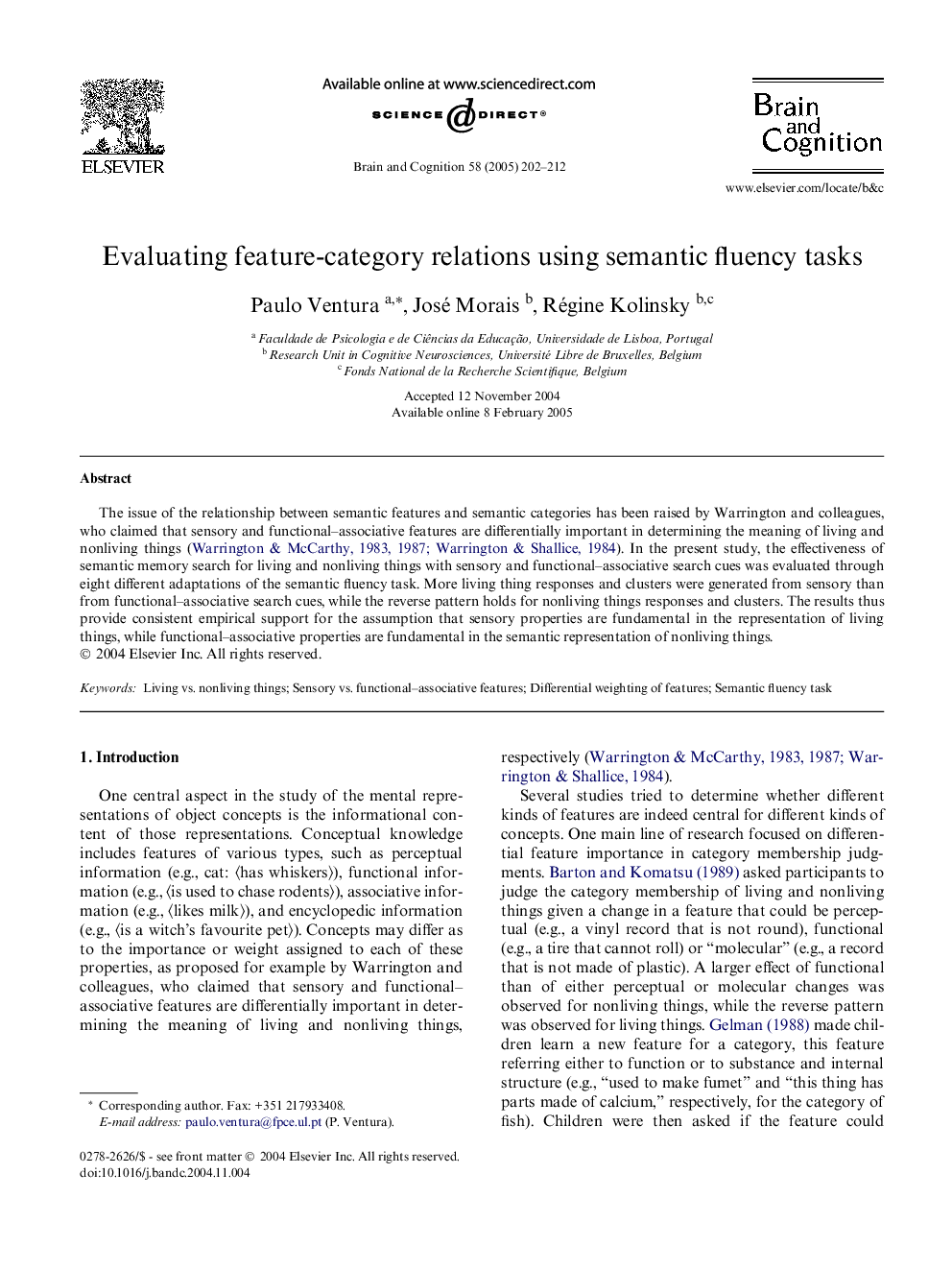| Article ID | Journal | Published Year | Pages | File Type |
|---|---|---|---|---|
| 10456248 | Brain and Cognition | 2005 | 11 Pages |
Abstract
The issue of the relationship between semantic features and semantic categories has been raised by Warrington and colleagues, who claimed that sensory and functional-associative features are differentially important in determining the meaning of living and nonliving things (Warrington and McCarthy, 1983, Warrington and McCarthy, 1987, Warrington and Shallice, 1984). In the present study, the effectiveness of semantic memory search for living and nonliving things with sensory and functional-associative search cues was evaluated through eight different adaptations of the semantic fluency task. More living thing responses and clusters were generated from sensory than from functional-associative search cues, while the reverse pattern holds for nonliving things responses and clusters. The results thus provide consistent empirical support for the assumption that sensory properties are fundamental in the representation of living things, while functional-associative properties are fundamental in the semantic representation of nonliving things.
Related Topics
Life Sciences
Neuroscience
Cognitive Neuroscience
Authors
Paulo Ventura, José Morais, Régine Kolinsky,
